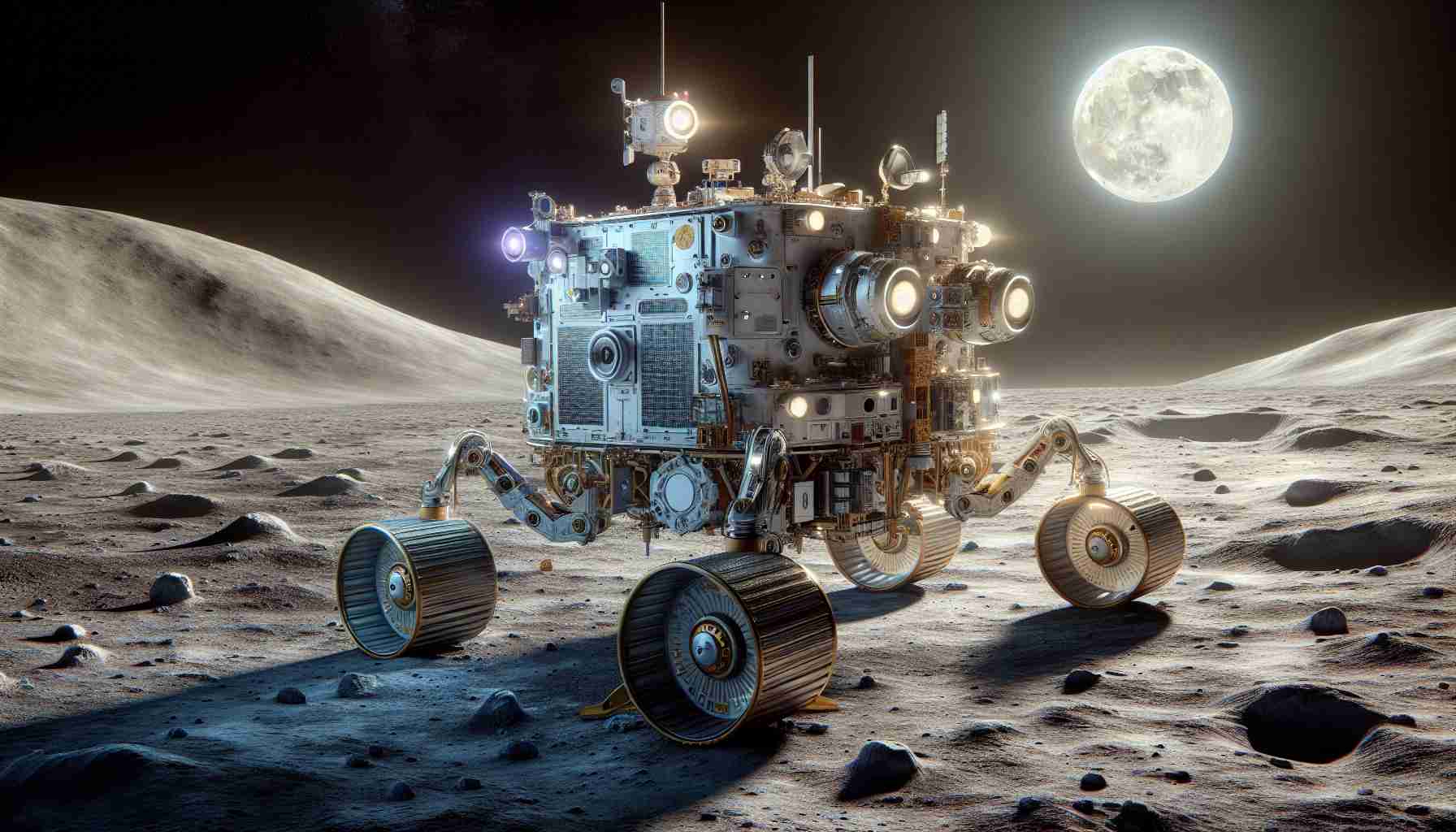- China’s Chang’e-7 mission targets the unexplored lunar southern pole.
- Features a unique smart flying robot designed to fly, crawl, and jump across the moon’s surface.
- The mission aims to explore potential ice deposits in dark lunar craters.
- Finding lunar ice could support sustainable human habitation by providing water and fuel.
- This endeavor is part of China’s long-term plan for a lunar research station and crewed missions by 2030.
- Chang’e-7 represents a significant advance in lunar exploration technology and ambitions.
Prepare for liftoff as China aims to transform lunar exploration with its revolutionary Chang’e-7 mission! This ambitious venture takes a daring leap into the unknown, venturing to the moon’s southern pole—a region untouched and shrouded in mystery.
At the heart of this mission is an extraordinary smart flying robot, crafted to navigate the moon’s rugged landscapes like never before. Unlike traditional rovers that inch along the surface, this futuristic marvel can fly, crawl, and jump effortlessly across vast distances. Imagine a six-legged creature capable of soaring dozens of kilometers with rocket propulsion, unlocking terrains that have remained elusive to previous explorers!
Scientists are eagerly anticipating what lies beneath the moon’s dark craters, where pools of frozen water may have rested silently for billions of years. The potential discovery of these ice deposits is not just a tantalizing prospect; it could pave the way for sustainable human habitation. Water, oxygen, and even rocket fuel derived from lunar ice could eliminate the need for costly fuel transported from Earth.
As the Chang’e-7 mission unfolds, it signals a monumental step toward China’s vision of a permanent lunar research station, with aspirations of crewed missions by 2030. This is not just a mission; it’s a bold stride into humanity’s cosmic future.
Stay tuned as we watch the skies and await the revelations that await us on the moon!
Unveiling the Future: How China’s Chang’e-7 Mission Redefines Lunar Exploration!
Moon Mission Overview
China’s Chang’e-7 mission is set to revolutionize our understanding of the Moon, particularly its southern polar region, a largely unexplored area that holds significant scientific and strategic importance. This mission intends to uncover secrets of the Moon’s surface while assessing resources that could be vital for future lunar habitation.
Key Features of Chang’e-7
– Advanced Robotics: Equipped with a smart flying robot, this mission will employ innovative technology that can fly, crawl, and jump across difficult terrain. This approach allows for exploration beyond the limitations of traditional rovers.
– Resource Exploration: Chang’e-7 will target the search for frozen water deposits in the Moon’s dark craters, a critical component for sustaining long-term human presence on the Moon.
– Research Station Goals: This mission is an essential part of China’s broader vision to establish a permanent lunar research station by 2030, which includes manned missions and extended scientific research on the Moon.
Sustainability Potential
Discovering lunar ice has enormous implications. It could enable:
– Water Supply: Essential for drinking and agricultural activities for astronauts.
– Oxygen Production: Oxygen could be extracted from water, supporting life.
– Fuel Production: Hydrogen from water can be combined with oxygen to create rocket fuel, facilitating deeper space exploration missions.
Trends and Predictions
The Chang’e-7 mission illustrates a trend in space exploration characterized by increased international competition and collaboration, with rising global investments in lunar and planetary science. Predictions suggest that successful resource extraction from the Moon could lead to a new era of sustainable space exploration and habitation.
Limitations of the Chang’e-7 Mission
Despite its ambitious goals, the mission faces several challenges:
– Technological Hurdles: The technology required for ice extraction and autonomous navigation in a rugged lunar environment is still being developed.
– Funding and Logistics: Large-scale lunar operations require significant investment and resources.
– International Regulations: With growing interest in lunar resources, there may be political and legal hurdles around the use of these resources.
Market Insights
China’s investment in lunar exploration is reflective of a global trend towards renewed interest in the Moon. The competition is intensifying, particularly with missions from NASA, the European Space Agency, and private investors. This has implications for international collaboration and potential conflicts over lunar resources.
Frequently Asked Questions
1. What impact will the Chang’e-7 mission have on future lunar missions?
The mission is expected to set new benchmarks in robotic exploration and resource utilization, influencing design and operational strategies for future missions by various space agencies.
2. How does Chang’e-7 compare to similar lunar missions by other countries?
Chang’e-7 stands out due to its focus on resource exploration and the innovative flying robot. While other missions, like NASA’s Artemis program, emphasize crewed exploration, Chang’e-7 uniquely combines advanced robotics with resource assessment, making it pivotal for sustainable lunar exploration.
3. What are the potential ethical considerations surrounding lunar resource extraction?
As nations vie for lunar resources, ethical questions arise regarding the ownership of these resources, particularly if they are found to be essential for future human colonization. Discussions around international treaties and agreements will be critical as more countries embark on lunar missions.
For more information on China’s lunar exploration efforts, visit China National Space Administration.



















